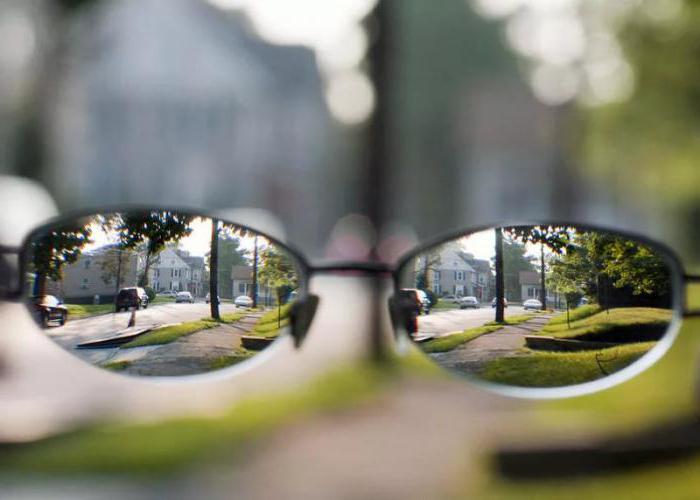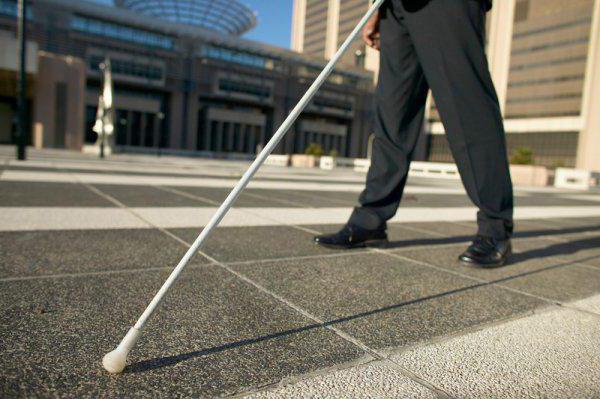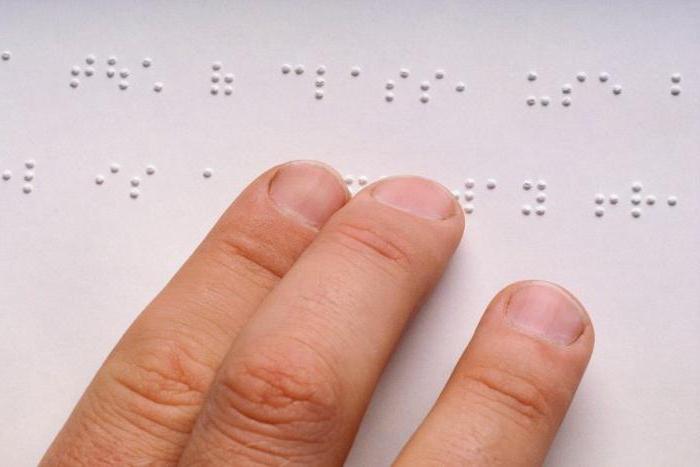Vision is one of the life-supporting factors. Thanks to him, a person is able to perceive the world around him. Vision allows you to distinguish between the shapes and colors of objects, the distance between them, and also to evaluate the relative position of objects in space.
Violations associated with this sensory organ are quite specific, since they immediately lead to certain restrictions. A man is forced to adapt in a new way to what surrounds him. Therefore, it is not surprising that a separate group of visual disabilities is highlighted.

Who is classified as disabled?
Under this concept fall those people who, due to certain circumstances, are deprived of the status of an able-bodied person. Disability can be due to either physical disabilities or mental disabilities. The basis for the group are serious disorders of the functions and systems of the body. Limitedness can be obtained in the process of acquiring injuries and transferring certain diseases or being congenital.
The reason for registration of disability may be a defect that indicates any deviations, it does not allow a person to properly care for themselves, communicate with other people, express their thoughts, monitor and answer for their actions, and carry out labor activities. People with disabilities usually need outside help. These people also include the blind and the visually impaired.
What are the biological factors of visual impairment?
There are several factors that impair vision. Some causes are due to injuries or congenital abnormalities, while others are due to biological factors, i.e. concomitant diseases, unhealthy lifestyles, age-related changes, adverse environmental situation. The visual impairment caused by any health disorders can be attributed specifically to biological factors.
Mutagenic processes are also included in this category. Such pathologies can be caused by negative environmental influences or can be transmitted genetically. This can also include birth injuries, chromosome failure. The problem can begin to develop with the baby in the womb. After all, pathologies and abnormalities associated with vision that arose at this stage can lead to a malfunction of the organ or a malfunction of the optic nerve. Children can be born with eye muscle defects.

In a separate group take out violations that arose in the process of life. These are the diseases that were provoked by age-related changes. The causes may also be turbidity and curvature of the lens, heterogeneity of the vitreous body, altered structure of the cornea and anomaly of the retina.
Problems with this sensory organ may not necessarily be caused by eye diseases. Sometimes the reason is the lack of blood supply to the vessels of the brain. Any changes in the cervical and shoulder parts lead to similar problems. This allows us to conclude that violations in the structure of the musculoskeletal system can lead to eye diseases.
Normal vision also depends on lifestyle. If a person is constantly in a stressful situation, feels physical and mental fatigue, does not sleep, then he will soon have eye problems.
One of the biological factors is an improper diet, which is poor in vitamin and mineral complexes. When the body is not able to independently and timely remove toxins and toxins, then this organ also suffers.
Depending on the degree of influence of these reasons, violations are classified: according to the percentage of destruction of a healthy muscle structure and visual impairment. Based on this, the problem can be conditionally admissible and operable.
What are environmental factors?
Visual impairment can also be achieved through environmental degradation. This includes everything that affects this organ of senses from the outside. Firstly, this is a bad environmental situation. Secondly, the monitor is too close to the eyesight, weak, insufficient lighting, improper body position when writing, reading or working, prolonged stress without interruption, harmful production, poor-quality screen that does not have a protective coating or defects that provoke harmful effects .
Environmental factors also include addictions.

What is related to social factors?
Most often, visual impairment is triggered by a combination of the above factors, which are supplemented by social causes. They do not directly lead to serious problems, but they have a catalytic effect for biological and environmental factors. Society can only exacerbate existing problems.
This category includes psychological restraint, awkwardness, constraint of one’s problems. This mainly applies to patients of a younger age. Most often, children and adolescents are afraid of ridicule from their peers and therefore refuse to wear corrective glasses or lenses. Sometimes they are simply afraid to admit their problems to their parents. A neglected disease is much more difficult to treat.
How is visually impaired status assigned?
At the moment, about fifty thousand Russian citizens have a visual impairment. The criteria for obtaining this status are divided into two groups:
The magnitude of visual acuity, which may depend on a huge range of diseases. A large number of violations affect the deterioration of this indicator. This can be relatively small deviations from the general perception, and a complete loss of sensitivity to light, which leads to blindness.
Ability to independence. This item is characterized from several positions. This is the possibility of movement and orientation in space without outside help, and the possibility of normal contact with others, and the ability to clearly express one’s thoughts. Specialists consider how much a person can control his behavior, whether he is able to learn and conduct work.
Both indicators can have different degrees of severity and collectively give different results. Of course, a visually impaired person has a lower quality of life. But a combination of various factors determines the help that he can count on.
How does the commission determine disability?
To establish visual impairment, an entire team of specialists conducts a comprehensive assessment. The final decision is influenced by many indicators. Doctors examine the patient for the role of a disease or pathology in his life. Particular attention is paid to a healthier eye - how much it allows you to perceive the surrounding reality and conduct any activity. The assigned disability group depends on how severe the dysfunctions of this sensory organ are and limited life activity.

Specialists around the world are conducting an examination on three indicators. The first characterizes the magnitude of acuity and the range of the field of view. The second includes all measured electrophysiological coefficients. The third sets the degree of possible disability.
How is the first disability group assigned?
The visually impaired group I is the person who perceives the world around him by no more than thirty-five percent. This includes people who have blindness in both eyes. Also, the first group of disabilities is laid for those whose optic nerves are so damaged that it cannot be restored. Lack of visual function is determined by a healthier eye.
The last degree (fourth group) of the absence of visual functions is characterized by pronounced dysfunctions. With this group, the patient is not able to independently maintain normal life. He almost constantly needs the help of another person.

How is the second disability group assigned?
The visual impairment of the 2nd group is imposed on those who have a deterioration in visual function at the third degree level. That is, the loss of work of this body is quite pronounced. General visual acuity ranges from 0.1 to 0.05. This, of course, is not a blind person, but visually impaired. He does not need a permanent nurse, but the help of social services has been laid.
How is the third disability group assigned?
Of course, not a third group should be received by a blind person, because here people with a visual acuity coefficient of the leading eye from 0.3 to 0.1 belong here. Dysfunction of this organ is measured within the first and second categories - this is a moderate degree of visual impairment. A disabled person of the third group can partially provide for their livelihoods, but he still needs social assistance.

The category of disability depends not only on the main disease, but also on related factors. These include: general environmental failure in the region, related health problems, place of residence and age.
How to register a disability group?
A visual disability pension is good support for someone with this problem. At a young age, a person has the right to the status of a disabled child. But upon reaching adulthood, you need to go through the re-registration procedure, which will confirm the status and the group itself.
The paperwork process is quite long. It begins with a routine examination by an ophthalmologist. After it, the patient for a certain period of time must go through some doctors, take tests. As a result, the results are recorded in a medical book, in which all pathologies of vital systems will be attested. All this book should be assured by the head doctor of the hospital.
The next step is to provide a medical record book to the commission, which will conduct another examination. In addition, you must also provide a referral from the head physician, an application for a certificate, the original and a copy of the passport, a certified copy of the work book, an act of injury that was received during the work process (if any).
What are the benefits for the visually impaired?
Before you get a visual disability, you should understand what types of benefits you can count on. This includes specialized projects, according to which the state provides patients with various equipment that allows them to be at least partially able to work.
But even with this, the visually impaired is not supposed to work in places with increased noise level, excessive humidity. It should not be heavy production, which differ by irregular working hours, harmfulness and nervous tension. A disabled person with these deviations must have a special workplace.

A person with disabilities is entitled to psychological and medical assistance. He should be provided with procedures and operations free of charge. Recovery in sanatoriums should also not be carried out at the expense of the patient himself. The state pays for transport to the place of spa treatment and vice versa, but such a benefit is granted only once a year.
The authorities also provided for the payment of financial support in the form of monthly pensions, there are other ways to allocate funds for the needs of people with disabilities.